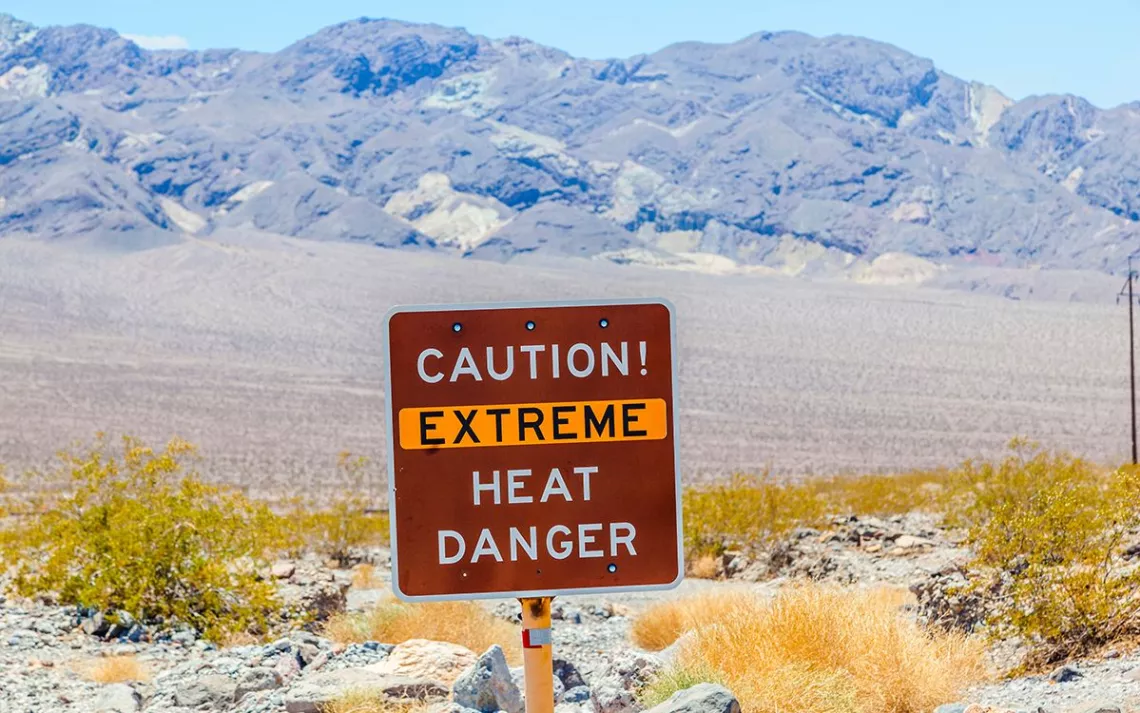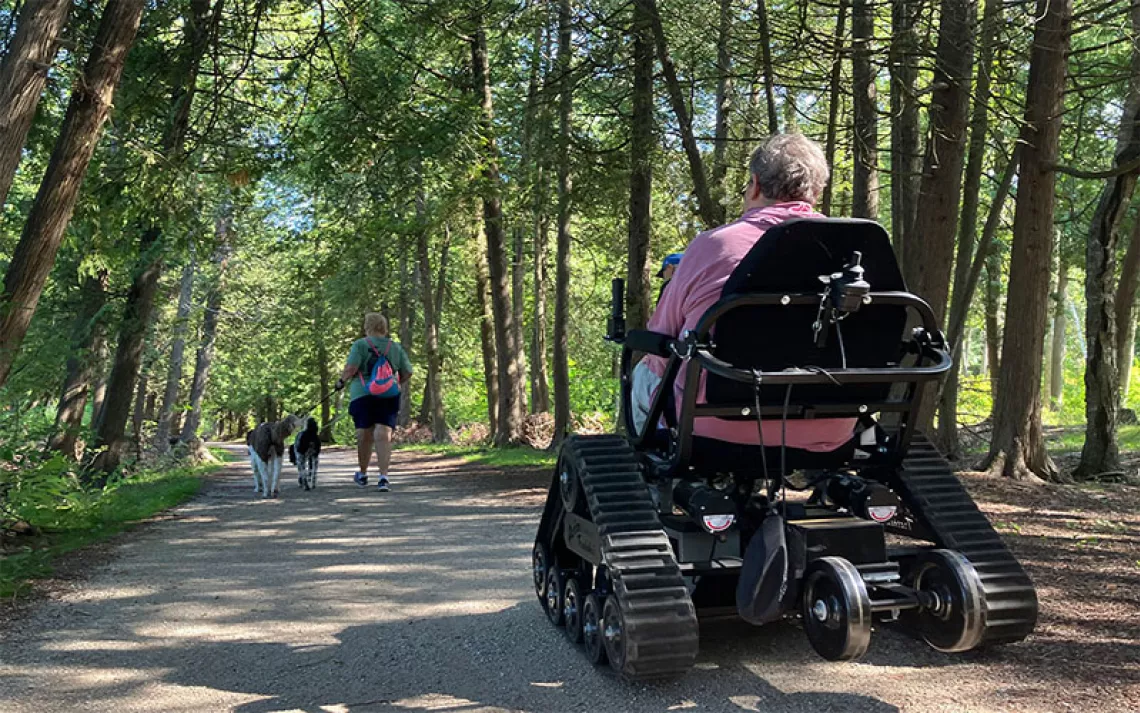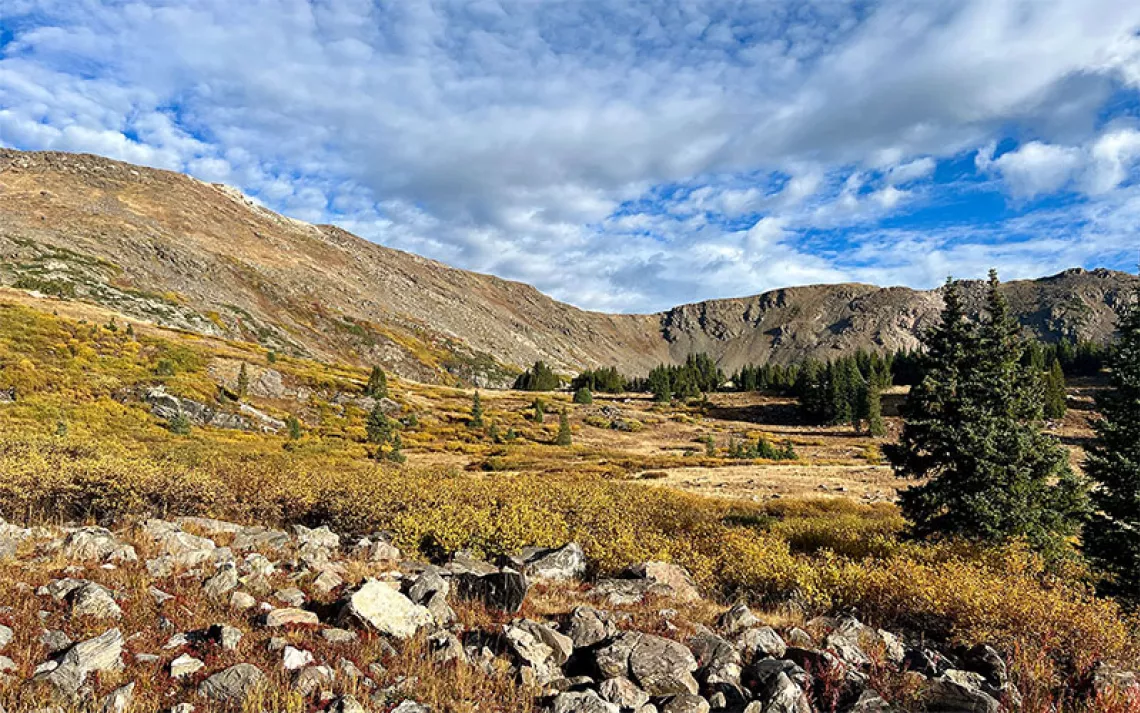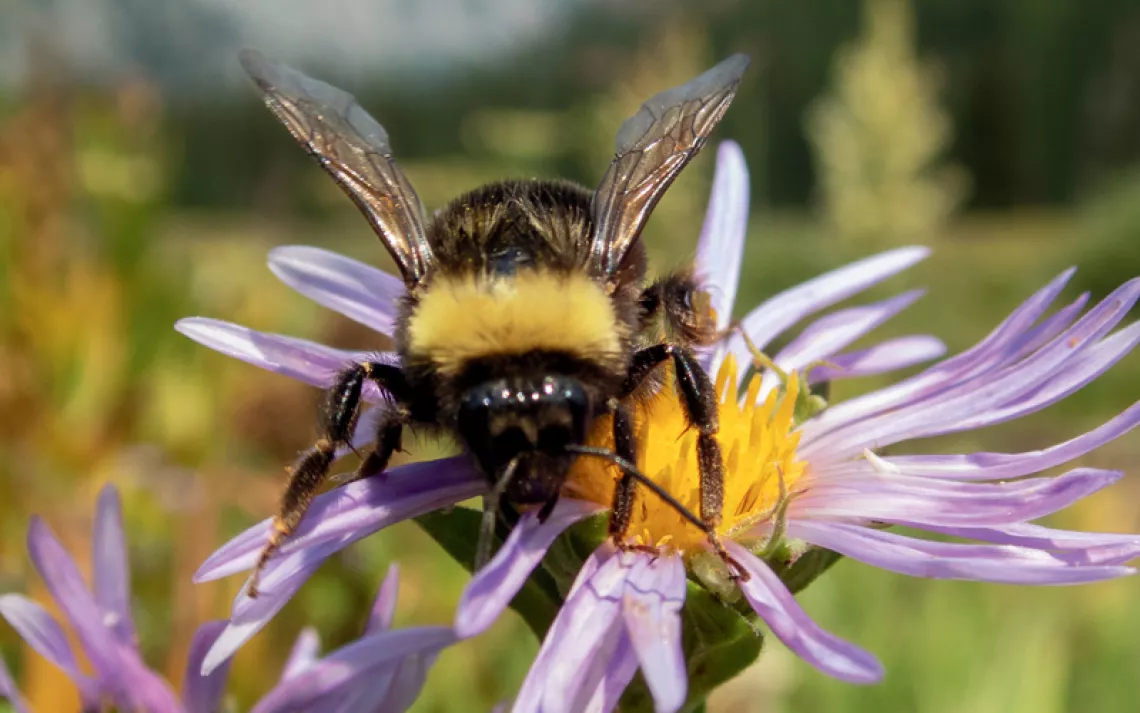How to Adventure Smart in Extreme Heat
You can’t beat the heat, so here are seven ways to prevent it from beating you
Earth is getting hotter, with climate change setting new heat records each year—and summers are getting downright dangerous. Tragically, reports of people dying from environmental heat-related incidents are on the rise.
“While this summer has seen massive increases in outdoor recreation as COVID restrictions are lifting, it seems to me that the primary driver of more heat illness has been unprecedented heat waves and high temperatures, likely driven by climate change,” says Dr. Tim Durkin, who specializes in emergency, sports medicine, and wilderness search and rescue in Durango, Colorado, and is also the medical adviser to the San Juan National Forest.
Knowing the day’s heat forecast before setting out on a hike has become as important as understanding avalanche conditions when backcountry skiing, or flash flood warnings when canyoneering. So determine the day’s heat index with help from online resources such as the OSHA Heat Safety Tool app. You’ll also want to study up on the early signs of heat illness—in yourself and in others—to avoid medical emergencies caused by heat. The following heat illnesses are on the rise in outdoor recreation and can affect anyone. Here’s how to recognize, treat, and avoid them.
Heat Cramps
A heat cramp is a sudden, painful contraction or spasm of a leg or abdomen muscle experienced in hot weather. Their cause is not fully understood. A long-held theory is that the depletion of electrolytes causes cramps, but new research suggests overstimulation of nerve endings by heat is a cause. While not life-threatening in themselves, they are a sign of heat stress.
Treatment: People experiencing heat cramps should stop or slow activity and cool down. Stretching the cramp and gentle massage can help, says Durkin. Drinking and taking in electrolytes is always a good idea.
“There’s promising research showing benefits from eating or drinking something spicy to relieve heat cramps,” Durkin says, citing findings from Nobel Prize–winning chemist Rod MacKinnon. That’s because environmental heat may contribute to the overstimulation of nerve endings (resulting in cramps and spasms), and spicy food may stabilize out-of-control nerve signals that cause muscle cramps by redirecting the brain. “This may stimulate receptors that promote muscle relaxation.”
Heat Exhaustion
Heat exhaustion is the condition of feeling tired, weak, and—well—exhausted in high temperatures. The body’s core has elevated temperatures between 99 and 104 degrees, and the body is maxing out all of its tricks to cool itself. Blood is being forced away from the brain and core, which can result in lightheadedness or fainting (heat syncope). Profuse sweating is trying to cool the body through evaporation. Symptoms can include headache, rapid pulse and/or breathing at rest, nausea, and dizziness. A person suffering from heat exhaustion is almost always dehydrated and needs electrolytes. Vomiting and diarrhea—which furthers dehydration—can occur in severe cases. If not addressed, heat exhaustion can quickly slip into life-threatening heat stroke. Heat exhaustion can also contribute to coronary incidents, as the heart is stressed from rapid pumping of blood thick from dehydration.
Treatment: Get cool. This is obvious but often overlooked before it becomes a problem. Heat exhaustion sneaks up on people who may just think that of course they’re hot and tired, and push on. Mental fatigue and confusion can set in, resulting in poor decision-making. Nausea may keep someone from eating and drinking—the exact opposite of what needs to happen. Sometimes someone suffering from heat exhaustion needs to be convinced to rest, eat, and drink. Find a shaded area and nibble some salty foods (even if you don’t feel like it). Pay attention to breaths per minute and pulse to make sure that they go down after resting (a fast pulse is the body trying to cool the core and brain by pushing blood away, and can result in lightheadedness due to low blood pressure and/or lower blood volume due to dehydration). Elevating the legs to help blood return to the brain can help with lightheadedness. Plan on spending another 30 minutes resting after you begin to feel better. It’s important for groups to take frequent breaks to allow people to assess themselves. No one should feel bad about wanting to take a longer break in the shade or soaking in a cool stream in order to cool down. When hiking in hot weather, add these longer, more frequent breaks into your planning.
“Agree to go together and abide by an ‘all to go, one to say no’ approach,” Durkin says. “If you have concerns your companion isn’t doing well, sometimes saying you don’t feel well and want to go back can allow someone to save their pride and maybe even their life.”
Heat Stroke
Heat stroke is life-threatening, killing an average of 700 people in the US each year. Thousands more recover from it, some with lasting health issues. Heat stroke happens when a person’s core reaches 104.9 degrees or higher. At this temperature, the brain and nervous system begin to shut down as cooling methods have been exhausted. Some heat stroke victims stop sweating, but the presence of sweating shouldn’t rule out the possibility of heat stroke. They can become irritable and belligerent. Sometimes patients hallucinate or seize. Ultimately if not treated, heat stroke sufferers lapse into unconsciousness. Organs begin to fail as proteins unravel. Untreated, death follows.
Treatment: Call SOS or 911 as soon as possible, and aggressively—and immediately—cool the body in the meantime.
“Do not be concerned about causing shock, hyperthermia, or shivering,” Durkin says. “Cooling this person as quickly as possible will save their life. Call 911 but do not delay cooling. We use horse troughs filled with ice water at running events.”
Ideally, when out hiking, there’s a cool stream nearby where a person can be soaked. Short of that, carefully move the patient to shade or create shade with a tarp or other materials. Vigorously fan the body as water (the colder the better) is applied to the whole body. Successful treatment will see the patient regain consciousness and breathing stabilize as the core temperature drops. All heat stroke patients should be taken to the hospital after cooling. If cooling was timely and effective, many patients can go home after checking lab tests. If cooling is delayed, patients will likely need ICU care for days and are at risk of delayed organ failure and death.
Hyponatremia
Hyponatremia is an imbalance of salt (sodium, Na) in the bloodstream due to drinking too much water. It can happen when a person forces themselves to drink too much water in an attempt to stave off dehydration (“cameling up”). Salt in the bloodstream becomes diluted (less than 135 mg per deciliter of blood), and symptoms similar to heat exhaustion can present. In extreme cases, hyponatremia can be fatal. Symptoms of early hyponatremia may be similar to those of heat exhaustion. Many patients with mild hyponatremia will have nausea or bloating.
Most people understand that drinking enough water is essential when exercising in the heat, but the importance of balancing electrolytes with water is often not. The FDA recommends that an average adult consumes 2,300 mg of salt daily, about a teaspoon. But exercising in heat can sweat out more than 1,000 mg of salt an hour, and 1 to 1.5 liters of water depending on factors such as humidity, excretion, age, and fitness. It’s as important to replace salt (sodium and chloride) as it is to replace water when exerting in high heat. Electrolytes are elements including sodium, calcium, and potassium that carry electrical signals throughout your nervous system. They let your brain tell your muscles to move, including making your heart beat. Chocolate is a good source of electrolytes, as are salty snacks (it’s not junk food; it’s electrolytes when you're adventuring).
Treatment: Eat salty foods. Roughly, a good water-to-salt ratio in heat is half a teaspoon of salt (about 1,000 mg) per liter of water over an hour when sweating heavily. The average adult can absorb about a liter of water per hour; any more is wasted or can lead to hyponatremia. The amounts can vary greatly from person to person and are affected by humidity and other factors. Anyone with kidney, heart, blood pressure, or other medical issues should consult their doctor about exercising in heat. Sport drinks add a combination of water and sodium, but you may need salty snacks to make up the 1,000 mg of sodium without going past the liter-per-hour mark when sweating heavily (a liter of Gatorade has 450 mg of sodium). If you or a member of your group has been drinking steadily with clear urine but is still suffering from a headache or other symptoms such as nausea or bloating, take a break and eat some salty snacks. Monitor your water and food intake per hour when exercising, but don’t force yourself to drink more than you feel like if you’re otherwise feeling fine. It’s best to sip water when you feel like it as opposed to chugging a liter all at once. Slightly yellow urine is a sign of good hydration. Clear urine may be a sign of overhydration. Dark urine is a sign of dehydration, though vitamins and medications may alter the color of urine.
“Drinking a certain amount per hour on a schedule increases your risk of hyponatremia and GI distress when exercising in the heat,” Durkin says. “Water needs vary greatly based on your size, fitness, and exercise intensity. Drink when you are thirsty, and bring plenty of water so you won’t run out or for others who may need it.”
Heat Rash and Sunburns
Almost everyone has experienced some degree of heat rash and sunburn. Heat rash is caused by blocked sweat ducts. Dehydration, general trail grime, and tight clothing can contribute to salt and dirt blocking the ducts. In extreme cases, heat rash can blister, causing wounds that can become infected. Make sure you’re properly hydrated, and use a disinfectant wipe to clean the rash area and unblock pores.
Sunburns are considered a right of summer passage, but they can be dangerous with long-lasting effects, including skin cancer. Sunburns are radiation poisoning from UVA/UVB rays that damages your cells’ DNA. This radiation damage triggers an immune response from the body that can result in pain through inflammation and damaged nerves, itching, and blistering. In extreme cases, it can cause fevers and flu-like symptoms. Between 10 A.M. and 2 P.M. are the highest-intensity times for ultraviolet radiation, and higher elevations further increase exposure due to the thinner atmosphere. People of all skin colors can suffer sunburns and reactions, though fair-skinned people are particularly susceptible. Sunburns are a risk in winter too, as 85 percent of ultraviolet light is reflected up by snow. Cloud cover may reduce the day’s heat, but it doesn’t stop the passage of UVA/UVB rays that cause sunburns. Medications such as some antibiotics and birth-control pills can also increase the body’s sensitivity to ultraviolet radiation.
Treatment: Sunburns suck, and only time will allow the damaged skin to repair itself. The best way to avoid sunburns is to cover the body with UV-protective clothing and hats. Exposed skin should be treated with sunscreen and reapplied throughout the day. Sun Protection Factor numbers (SPF) tell you approximately how long the sunscreen will work. If you can be outside for 15 minutes before experiencing sun damage, an SPF 10 will allow you to stay out for 150 minutes before sunscreen needs to be reapplied. Sunscreen needs to be applied at least 30 minutes before heading out to allow it to absorb into the skin. It should be reapplied on the trail every few hours depending on the SPF and amount of sweating. It takes two to six hours after damaging sun exposure for symptoms to present. Just because you feel fine in the sun now doesn’t mean you’re not getting a sunburn.
Sunburn symptoms can be treated with a cold compress that lessens inflammation and offers some relief. Aloe vera gel or other moisturizers can help, but oils, sprays, and creams may actually work to aggravate the immune reaction. Over-the-counter oral pain medication can be helpful, especially when trying to sleep. Diphenhydramine such as Benadryl can ease itchiness. If blisters form, don’t pop them as the fluid is sterile. If they do pop you can treat the area with an antibiotic ointment. Areas with peeling skin can be treated with moisturizers. Sunburned skin also may not sweat as ducts have been damaged and could lead to overheating. Take extra care in the heat if you have to exert yourself with a sunburn.
Dogs and Heat Illness
More than ever, dogs are enjoying the trails with their humans—and they can suffer from all of the same heat illnesses, even sunburn on their noses. Dogs also tend to naturally over-exert themselves in their excitement. Keeping your dog on a leash will keep its pace steady and prevent overexertion. Hydration packs are available for dogs, although your puppers should be used to carrying extra weight before a long, hot hike. Dogs need about a quarter-liter to a third-liter of water for every five pounds of their weight daily, and more on hot hikes. Make sure you have plenty of water for both you and your dog, and don’t count on found water. Make sure your dog rests, rehydrates, and eats when you do. Note their panting after a break to make sure it stabilizes. As with humans, older, heavier, and out-of-shape dogs will be more susceptible to heat issues. Dogs don’t sweat like humans and rely mainly on panting and sweating through their paws for cooling. Dog booties, packs, and harnesses can increase your doggo’s core temperature as they trap heat. Make sure your pup’s mouth and gums aren’t dry or foamy, and that your pup isn’t becoming overly lethargic. Dogs are team members on hikes and should be afforded the same care and concern as humans.
Bottom Line
Outdoor recreation is up, and so are the temperatures. Cool mornings can turn into sweltering days. Have a plan for staying safe from heat illness with plenty of water, salty snacks, and shade. You can’t beat the heat—but you can prevent it from beating you.
 The Magazine of The Sierra Club
The Magazine of The Sierra Club








